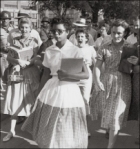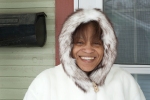 Originally published at BreakPoint.org
Originally published at BreakPoint.org
As recounted in David Margolick’s new book Elizabeth and Hazel: Two Women of Little Rock, the story begins on a landmark day in America’s civil rights journey—the first day an African American student tried to attend a white school. Actually, there were supposed to be nine, but the other eight were delayed from heading to Central High School in Little Rock, Arkansas, because of rumors that a riot was brewing.
Fifteen-year-old Elizabeth Eckford didn’t get the memo, and arrived at Central just in time to meet a mob of protesters. Smack dab in the center of the crowd, Central High sophomore Hazel Bryan opened her mouth and began spewing vitriol in Elizabeth’s direction—just in time to be caught on camera and forever be marked as the scapegoat of American bigotry. Similarly, Elizabeth became the martyr for all those who had suffered the scorn of white hatred.
From that photograph, Margolick journeys with the two women through the politics of prejudice in Arkansas, past outrage that the photo evoked on both the national and international stage, and into their own personal stories that are as conflicted as America’s struggle toward racial reconciliation.






